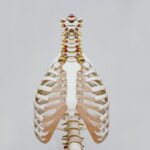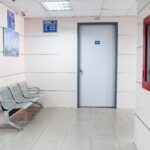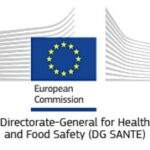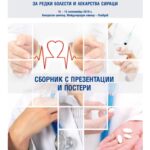 Mastocytosis is a rare disease with varied presentation, myriad symptomatology and variable prognosis. Most patients present with cutaneous disease and mediator-related symptomatology with a small subset having systemic disease (systemic mastocytosis, SM). A subset of the latter develops synchronous or metachronous haematologic neoplasms (SM-AHN), most commonly chronic myelomonocytic leukaemia (CMML). Advanced systemic mastocytosis (ASM) is seen in a relatively small number of patients and is usually associated with organ dysfunction, and may present with hepatosplenomegaly, lymphadenopathy and ascites with progression to leukaemic transformation (mast cell leukaemia/acute myeloid leukaemia) occurring in a few patients. This paper discusses the clinical and pathologic features of the entire spectrum of SM in adults. For more information click here.
Mastocytosis is a rare disease with varied presentation, myriad symptomatology and variable prognosis. Most patients present with cutaneous disease and mediator-related symptomatology with a small subset having systemic disease (systemic mastocytosis, SM). A subset of the latter develops synchronous or metachronous haematologic neoplasms (SM-AHN), most commonly chronic myelomonocytic leukaemia (CMML). Advanced systemic mastocytosis (ASM) is seen in a relatively small number of patients and is usually associated with organ dysfunction, and may present with hepatosplenomegaly, lymphadenopathy and ascites with progression to leukaemic transformation (mast cell leukaemia/acute myeloid leukaemia) occurring in a few patients. This paper discusses the clinical and pathologic features of the entire spectrum of SM in adults. For more information click here.
informer
Retinal biomarkers and pharmacological targets for Hermansky-Pudlak syndrome 7
 Deletion of dystrobrevin binding protein 1 has been linked to Hermansky-Pudlak syndrome type 7 (HPS-7), a rare disease characterized by oculocutaneous albinism and retinal dysfunction. We studied dysbindin-1 null mutant mice (Dys-/-) to shed light on retinal neurodevelopment defects in HPS-7. We analyzed the expression of a focused set of miRNAs in retina of wild type (WT), Dys+/- and Dys-/- mice. We also investigated the retinal function of these mice through electroretinography (ERG). We found that miR-101-3p, miR-137, miR-186-5p, miR-326, miR-382-5p and miR-876-5p were up-regulated in Dys-/-mice retina. Dys-/- mice showed significant increased b-wave in ERG, compared to WT mice. Bioinformatic analysis highlighted that dysregulated miRNAs target synaptic plasticity and dopaminergic signaling pathways, affecting retinal functions of Dys-/- mice. Overall, the data indicate potential mechanisms in retinal neurodevelopment of Dys-/- mice, which may have translational significance in HSP-7 patients, both in terms of diagnostic/prognostic biomarkers and novel pharmacological targets. For more information click here.
Deletion of dystrobrevin binding protein 1 has been linked to Hermansky-Pudlak syndrome type 7 (HPS-7), a rare disease characterized by oculocutaneous albinism and retinal dysfunction. We studied dysbindin-1 null mutant mice (Dys-/-) to shed light on retinal neurodevelopment defects in HPS-7. We analyzed the expression of a focused set of miRNAs in retina of wild type (WT), Dys+/- and Dys-/- mice. We also investigated the retinal function of these mice through electroretinography (ERG). We found that miR-101-3p, miR-137, miR-186-5p, miR-326, miR-382-5p and miR-876-5p were up-regulated in Dys-/-mice retina. Dys-/- mice showed significant increased b-wave in ERG, compared to WT mice. Bioinformatic analysis highlighted that dysregulated miRNAs target synaptic plasticity and dopaminergic signaling pathways, affecting retinal functions of Dys-/- mice. Overall, the data indicate potential mechanisms in retinal neurodevelopment of Dys-/- mice, which may have translational significance in HSP-7 patients, both in terms of diagnostic/prognostic biomarkers and novel pharmacological targets. For more information click here.
Emerging treatment options for spinal muscular atrophy with respiratory distress type 1
 Spinal muscular atrophy (SMA) with respiratory distress type 1 (SMARD1) is an autosomal recessive motor neuron disease that is characterized by distal and proximal muscle weakness and diaphragmatic palsy that leads to respiratory distress. Without intervention, infants with the severe form of the disease die before 2 years of age. SMARD1 is caused by mutations in the IGHMBP2 gene that determine a deficiency in the encoded IGHMBP2 protein, which plays a critical role in motor neuron survival because of its functions in mRNA processing and maturation. Although it is rare, SMARD1 is the second most common motor neuron disease of infancy, and currently, treatment is primarily supportive. No effective therapy is available for this devastating disease, although multidisciplinary care has been an essential element of the improved quality of life and life span extension in these patients in recent years. The objectives of this review are to discuss the current understanding of SMARD1 through a summary of the presently known information regarding its clinical presentation and pathogenesis and to discuss emerging therapeutic approaches. For more information click here.
Spinal muscular atrophy (SMA) with respiratory distress type 1 (SMARD1) is an autosomal recessive motor neuron disease that is characterized by distal and proximal muscle weakness and diaphragmatic palsy that leads to respiratory distress. Without intervention, infants with the severe form of the disease die before 2 years of age. SMARD1 is caused by mutations in the IGHMBP2 gene that determine a deficiency in the encoded IGHMBP2 protein, which plays a critical role in motor neuron survival because of its functions in mRNA processing and maturation. Although it is rare, SMARD1 is the second most common motor neuron disease of infancy, and currently, treatment is primarily supportive. No effective therapy is available for this devastating disease, although multidisciplinary care has been an essential element of the improved quality of life and life span extension in these patients in recent years. The objectives of this review are to discuss the current understanding of SMARD1 through a summary of the presently known information regarding its clinical presentation and pathogenesis and to discuss emerging therapeutic approaches. For more information click here.
 Niemann-Pick type C (NPC) disease is an autosomal recessive lysosomal storage disorder caused by mutations in NPC1 or NPC2 genes. In 2009, the molecular characterization of 44 NPC Italian patients has been published. Here, we present an update of the genetic findings in 105 Italian NPC patients belonging to 83 unrelated families (77 NPC1 and 6 NPC2). NPC1 and NPC2 genes were studied following an algorithm recently published. Eighty-four different NPC1 and five NPC2 alleles were identified. Only two NPC1 alleles remained non detected. Sixty-two percent of NPC1 alleles were due to missense variants. The most frequent NPC1 mutation was the p.F284Lfs*26 (5.8% of the alleles). All NPC2 mutations were found in the homozygous state, and all but one was severe. Among newly diagnosed patients, 18 novel NPC1 mutations were identified. For more information click here.
Niemann-Pick type C (NPC) disease is an autosomal recessive lysosomal storage disorder caused by mutations in NPC1 or NPC2 genes. In 2009, the molecular characterization of 44 NPC Italian patients has been published. Here, we present an update of the genetic findings in 105 Italian NPC patients belonging to 83 unrelated families (77 NPC1 and 6 NPC2). NPC1 and NPC2 genes were studied following an algorithm recently published. Eighty-four different NPC1 and five NPC2 alleles were identified. Only two NPC1 alleles remained non detected. Sixty-two percent of NPC1 alleles were due to missense variants. The most frequent NPC1 mutation was the p.F284Lfs*26 (5.8% of the alleles). All NPC2 mutations were found in the homozygous state, and all but one was severe. Among newly diagnosed patients, 18 novel NPC1 mutations were identified. For more information click here.
 In the context of COVID-19 pandemic and launching of the ‘COVID-19 Clinical Management Support System’, DG SANTE is organising a series of webinars to support clinicians and other healthcare professionals at the frontline who treat the patients with COVID-19. We would like to invite you and any other colleague or healthcare professional of your hospital that might be interested, to the 6th Webinar: “COVID-19: Endocrine conditions with increased risk” that will take place on Tuesday 12 May, from 18:00 to 19:00. It will feature Prof. Alberto Pereira, Prof. Elco de Koning and Prof. Wiebke Arlt. For more information click here.
In the context of COVID-19 pandemic and launching of the ‘COVID-19 Clinical Management Support System’, DG SANTE is organising a series of webinars to support clinicians and other healthcare professionals at the frontline who treat the patients with COVID-19. We would like to invite you and any other colleague or healthcare professional of your hospital that might be interested, to the 6th Webinar: “COVID-19: Endocrine conditions with increased risk” that will take place on Tuesday 12 May, from 18:00 to 19:00. It will feature Prof. Alberto Pereira, Prof. Elco de Koning and Prof. Wiebke Arlt. For more information click here.
Second-line treatment trends of 392 children with chronic immune thrombocytopenic purpura
 Childhood chronic immune thrombocytopenic purpura (cITP) is a rare disease. In severe cases, there is no evidence for the optimal therapeutic strategy. Our aim was to describe the real-life management of non-selected children with cITP at diagnosis. Since 2004, patients less than 18 years old with cITP have been enrolled in the national prospective cohort, OBS’CEREVANCE. From 1990 to 2014, in 29 centres, 392 children were diagnosed with cITP. With a median follow-up of six years (2·0-25), 45% did not need second-line therapy, and 55% (n = 217) received one or more second lines, mainly splenectomy (n = 108), hydroxychloroquine (n = 61), rituximab (n = 61) or azathioprine (n = 40). For more information click here.
Childhood chronic immune thrombocytopenic purpura (cITP) is a rare disease. In severe cases, there is no evidence for the optimal therapeutic strategy. Our aim was to describe the real-life management of non-selected children with cITP at diagnosis. Since 2004, patients less than 18 years old with cITP have been enrolled in the national prospective cohort, OBS’CEREVANCE. From 1990 to 2014, in 29 centres, 392 children were diagnosed with cITP. With a median follow-up of six years (2·0-25), 45% did not need second-line therapy, and 55% (n = 217) received one or more second lines, mainly splenectomy (n = 108), hydroxychloroquine (n = 61), rituximab (n = 61) or azathioprine (n = 40). For more information click here.
 In the context of COVID-19 pandemic and launching of the ‘COVID-19 Clinical Management Support System’, DG SANTE is organising a series of webinars to support clinicians and other healthcare professionals at the frontline who treat the patients with COVID-19. DG SANTE would like to invite you and any other colleague or healthcare professional of your hospital that might be interested, to the 5th Webinar: “COVID-19 and Cardiomyopathies and Myocarditis” that will take place on Thursday 7 May, from 17:00 to 18:30. It will feature Prof. Philippe Charron and Prof. Alida LP Caforio. For more information follow the link.
In the context of COVID-19 pandemic and launching of the ‘COVID-19 Clinical Management Support System’, DG SANTE is organising a series of webinars to support clinicians and other healthcare professionals at the frontline who treat the patients with COVID-19. DG SANTE would like to invite you and any other colleague or healthcare professional of your hospital that might be interested, to the 5th Webinar: “COVID-19 and Cardiomyopathies and Myocarditis” that will take place on Thursday 7 May, from 17:00 to 18:30. It will feature Prof. Philippe Charron and Prof. Alida LP Caforio. For more information follow the link.
 The collection of presentations and posters from the 10th National Conference for Rare Diseases and Orphan Drugs has been published. You can find the collection attached as a supplement in the journal Rare Diseases and Orphan Drugs and in it you will see the presentations of all speakers, as well as materials from the poster sessions. Follow the link to access the collection.
The collection of presentations and posters from the 10th National Conference for Rare Diseases and Orphan Drugs has been published. You can find the collection attached as a supplement in the journal Rare Diseases and Orphan Drugs and in it you will see the presentations of all speakers, as well as materials from the poster sessions. Follow the link to access the collection.
 In the context of COVID-19 pandemic and launching of the ‘COVID-19 Clinical Management Support System’, DG SANTE is organising a series of webinars to support clinicians and other healthcare professionals at the frontline who treat the patients with COVID-19. We would like to invite you and any other colleague or healthcare professional of your hospital that might be interested, to the 4th Webinar: “COVID-19 in patients with rare diseases of the respiratory system” that will take place on Thursday 30 April, from 17:00 to 18:30. It will feature Thomas Wagner, Isabel Fajak, Michael Kreuther and more. For more information click here.
In the context of COVID-19 pandemic and launching of the ‘COVID-19 Clinical Management Support System’, DG SANTE is organising a series of webinars to support clinicians and other healthcare professionals at the frontline who treat the patients with COVID-19. We would like to invite you and any other colleague or healthcare professional of your hospital that might be interested, to the 4th Webinar: “COVID-19 in patients with rare diseases of the respiratory system” that will take place on Thursday 30 April, from 17:00 to 18:30. It will feature Thomas Wagner, Isabel Fajak, Michael Kreuther and more. For more information click here.
 In the context of COVID-19 pandemic and launching of the ‘COVID-19 Clinical Management Support System’, DG SANTE is organising a series of webinars to support clinicians and other healthcare professionals at the frontline who treat the patients with COVID-19. We would like to invite you and any other colleague or healthcare professional of your hospital that might be interested, to the 3rd Webinar: ‘COVID-19 and anti-epileptic drugs’ that will take place on Monday 27 April, from 17:00 to 18:30. It will chaired by some of the finest experts in epilepsy in the EU – Prof Alexis Arzimanoglou, Prof. Emilio Perucca, Prof. Cecilie Landmark and Prof. Eugen Trinka. For more information click here.
In the context of COVID-19 pandemic and launching of the ‘COVID-19 Clinical Management Support System’, DG SANTE is organising a series of webinars to support clinicians and other healthcare professionals at the frontline who treat the patients with COVID-19. We would like to invite you and any other colleague or healthcare professional of your hospital that might be interested, to the 3rd Webinar: ‘COVID-19 and anti-epileptic drugs’ that will take place on Monday 27 April, from 17:00 to 18:30. It will chaired by some of the finest experts in epilepsy in the EU – Prof Alexis Arzimanoglou, Prof. Emilio Perucca, Prof. Cecilie Landmark and Prof. Eugen Trinka. For more information click here.
